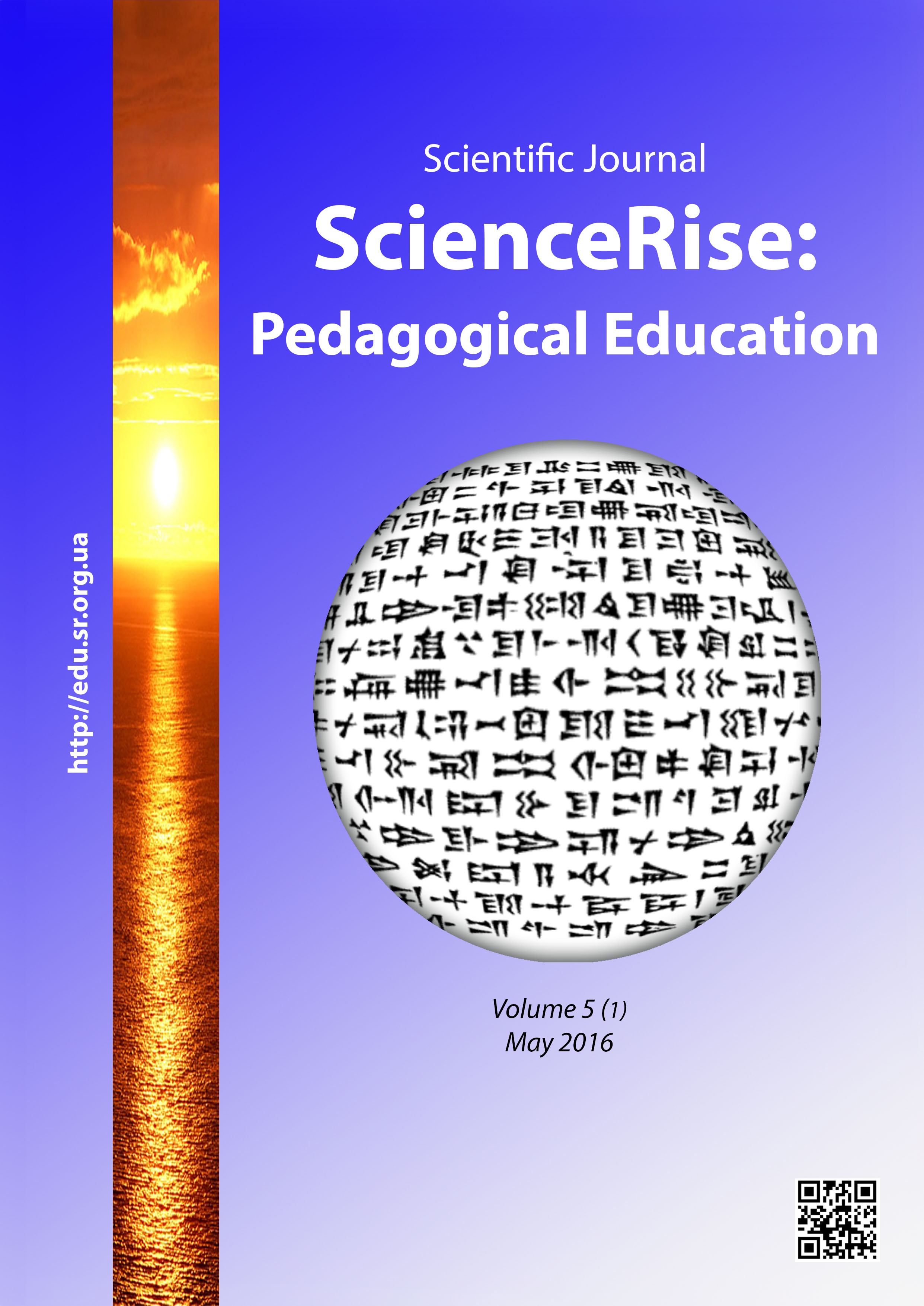Управління розвитком загальноосвітнього навчального закладу: теоретико-практичний аналіз
DOI:
https://doi.org/10.15587/2519-4984.2016.70213Ключові слова:
управління розвитком загальноосвітнього навчального закладу, закономірності, принципи, функції, організаційна структураАнотація
Здійснено теоретико-практичний аналіз проблеми управління розвитком загальноосвітнього навчального закладу. З’ясовано протиріччя, що обумовлюють актуальність означеної проблеми. Визначено закономірності, принципи, функції управління розвитком. Установлено відмінності традиційної та матричної організаційної структури управління, схарактеризовано її переваги та ризики
Посилання
- Bondar, V. S. (1997). Management activities of the Director of the school: didactic aspect. Kyiv, 156.
- Maslov, V. I. (2007). Scientific basics and functions of the management process of secondary educational institutions. Ternopil: Aston, 7–8.
- Ninuk, I. (2004). Features of the analysis of professionalism of civil servants. Collection of scientific papers NADU, 2, 225–234.
- Vasilenko, V. A., Shmatko, V. G.; Vasilenko, V. A. (Ed.) (2009). Innovation management. Kyiv: Center of educational literature, 440.
- Vashchenko, L. M. (2012). Conceptual bases of organization of educational process for professional development of pedagogical, scientific-pedagogical and managing staff of education in the conditions of innovative development of institutions of postgraduate teacher education. Innovative model of organization of educational process in institutes of postgraduate pedagogical education. Kyiv: Pedagogical thought, 63–68.
- Voznyuk, S. V. (2007). Marketing of educational services. Lutsk: Volinska book, 64.
- El'nikova, G. V. (1999). Scientific bases of development of the Department of General secondary education in the region. Kyiv: of DAKKO, 303.
- Karamushka, L. (1997). Psychological foundations of governance in secondary education. Kyiv: Academy of pedagogical Sciences of Ukraine, Institute of psychology, 179.
- Potashnik, M. M. (1997). Management of modern school (questions and answers). Moscow: New HQ., 350.
- Danilenko, L. I. (2007). Management of innovations in education. Kyiv: SHK. world, 120.
- Averintsev, S. S., Arab-Ogly, E. A., Ilichev, L. F. et. al (Eds.) (1989). Philosophical encyclopedic dictionary. Moscow: Owls. Encyclopedia, 815.
- Novak, V. A. (2001). fundamentals of the theory of management. Kyiv: NAU, 236.
- Nazarenko, V. S., Nazarenko, L. M., Odainik, S. F. (2015). Professional success of the teacher as a socio-pedagogical problem. Chep. 1. Kharkov, 96.
- Mudrak, I. V. (2007). Modern tendencies of development of Ukrainian higher education in the global educational space. Kn. 1. Ukrainian education in the world greenprotective. Kyiv: Ukrainian Agency of press and information "Rada", 362–363.
- Karpov, A. (2005). Century Psychology of management. Moscow: Gardariki, 584.
- Doronina, M. S., Naumych, K. G. (2006). Organizational culture. Kharkov: Publishing House. GNU, 80.
- Chernovol-Tkachenko, G. I. (2014). Equipment management activities. Kharkiv: Type. group "Osnova", 272.
- Valinchuk, Yu. V. (2007). Higher education future human. Kn. 1.Ukrainian education in the world greenprotective. Kyiv: Ukrainian Agency of press and information "Rada", 88–89.
- Dmitrenko, G. A. (1996). Strategic management: trust management-based education qualimetrics approach. Kyiv: SMN, 140.
- Zaichenko, A. I. (2001). Systematic work with senior staff – enhance their professional competence. Quality Management professional education. Donetsk, 333–335.
- Ryabov, S. V. (2011). Marketing research in the management of the school. Theory and methodology of education management, 5. Availavble at: http://tme.umo.edu.ua/
##submission.downloads##
Опубліковано
Як цитувати
Номер
Розділ
Ліцензія
Авторське право (c) 2016 Людмила Миколаївна Назаренко

Ця робота ліцензується відповідно до Creative Commons Attribution 4.0 International License.
Наше видання використовує положення про авторські права Creative Commons CC BY для журналів відкритого доступу.
Автори, які публікуються у цьому журналі, погоджуються з наступними умовами:
1. Автори залишають за собою право на авторство своєї роботи та передають журналу право першої публікації цієї роботи на умовах ліцензії Creative Commons CC BY, котра дозволяє іншим особам вільно розповсюджувати опубліковану роботу з обов'язковим посиланням на авторів оригінальної роботи та першу публікацію роботи у цьому журналі.
2. Автори мають право укладати самостійні додаткові угоди щодо неексклюзивного розповсюдження роботи у тому вигляді, в якому вона була опублікована цим журналом (наприклад, розміщувати роботу в електронному сховищі установи або публікувати у складі монографії), за умови збереження посилання на першу публікацію роботи у цьому журналі.









